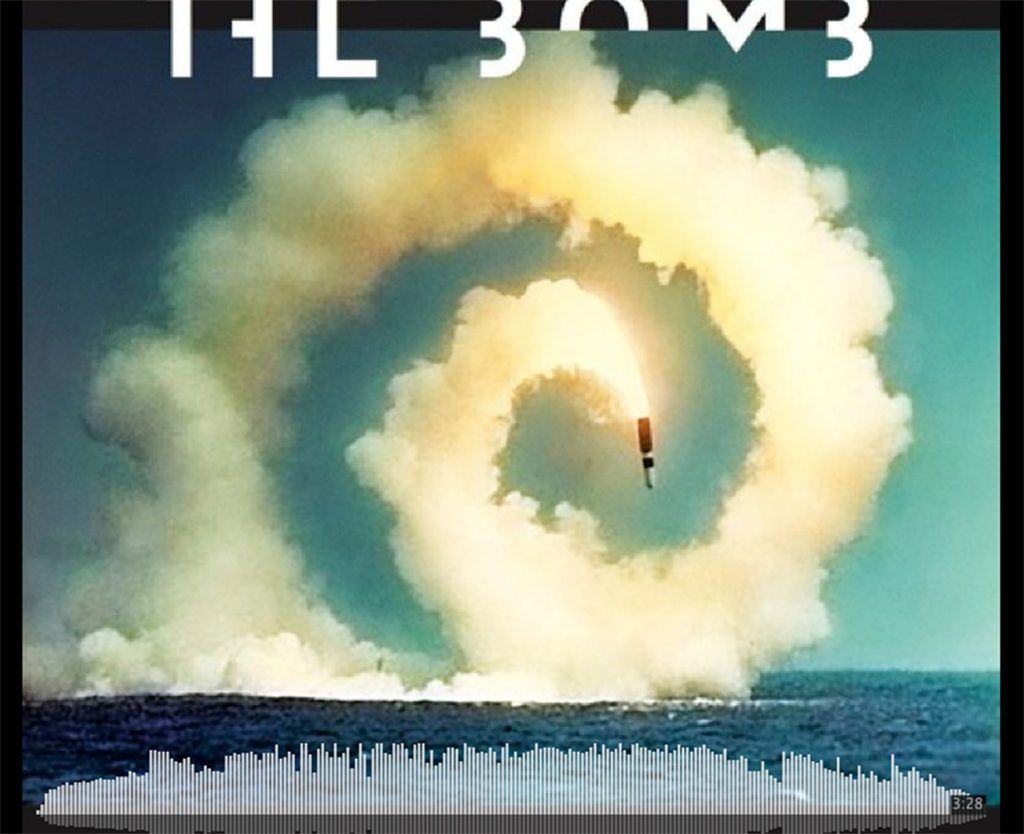The six best Bulletin magazine articles of 2023
By Dan Drollette Jr | January 1, 2024
 Image of a missile spiraling out of control during a missile test, from a multimedia traveling exhibit called "The Bomb." https://thebulletin.org/2016/04/nuclear-film-does-not-bomb-on-broadway/
Image of a missile spiraling out of control during a missile test, from a multimedia traveling exhibit called "The Bomb." https://thebulletin.org/2016/04/nuclear-film-does-not-bomb-on-broadway/
Broken Arrows. The Museum of Failure. AI. A group of emergency responders known as “NEST.”
These diverse subjects have at least one common thread: Each was the subject of an article in the Bulletin of the Atomic Scientists bi-monthly magazine in 2023. And each of those articles was one of the six best published in the magazine over the course of the year.
And the winners are…
Eric Schlosser: Why we can’t trust the government’s figures about nuclear close calls
By Eric Schlosser
For years, the US military has said that the number of unintentional launches, detonations, thefts, or losses of nuclear weaponry-often referred to as “Broken Arrows”-has been no more than 32. But investigative journalist Eric Schlosser, author of Command and Control: Nuclear Weapons, the Damascus Accident, and the Illusion of Safety, asserts that the Pentagon’s list is missing key events and contains inaccuracies-which means that there may be hundreds more accidents. More important, says Schlosser, the large number of close calls and near-misses shows that unless nuclear weapons are abolished, the United States needs to take the handling of its nuclear weapons more seriously and spare no expense in terms of their safety and their management.
Interview with Samuel West, founder of the Museum of Failure
By Dan Drollette Jr
Fear of failure is a big obstacle to innovation, says Samuel West, a psychologist who studies corporate behavior. But if cutting-edge products may die embarrassing deaths, they often also lay the groundwork for better, more well-timed ideas with features that allow them to flourish later on. To publicize the idea that embracing initial failure is the first step to eventual progress, West launched a traveling exhibit-The Museum of Failure-that showcases botched products and ideas. His goal was to celebrate the role that missteps play in innovation and progress. The museum has become a big success.
By Dawn Stover
Coverage of the risks and benefits of AI have paid scant attention to how chatbots might affect public health at a time when depression, suicide, anxiety, and mental illness are epidemic in the United States. But mental health experts and the healthcare industry view AI mostly as a promising tool, rather than the potential threat to mental health it could be.
Nerds, ninjas, and neutrons: The story of the Nuclear Emergency Support Team
By Jay A. Tilden and Dallas Boyd
Recently declassified material and other information that has never before appeared in the public domain allow a glimpse into the workings of the Nuclear Emergency Support Team, or “NEST”-often one of the first agencies to respond whenever there is an incident involving a nuclear weapon or a nuclear reactor.
“He did not speak the ordinary language”: Memories of Oppie, from a Manhattan Project physicist
By Dan Drollette Jr.
Eighteen months before he died, Roy Glauber-one of the last surviving physicists from the Manhattan Project-sat down with a Bulletin editor to give his first-hand impressions of what it was like to work on the Bomb as a teenaged physics wunderkind. (Glauber went on to win a Nobel Prize in physics decades later.) This eyewitness to events describes being plucked out of his first semester of college and assigned to work at a mysterious new government research center in far-off Los Alamos, New Mexico. Along the way, Glauber describes the personality of J. Robert Oppenheimer, the “father of the Bomb”-and the personality of Edward Teller, who became Oppenheimer’s nemesis.
“Collateral damage: American civilian survivors of the 1945 Trinity test“
By Lesley M. M. Blume
The site of the test for the first atomic bomb was chosen, in part, for its supposed remove from human inhabitation. Yet nearly 500,000 people were living within a 150-mile radius of the explosion (some as close as 12 miles) when the Trinity Test was conducted on July 14, 1945. None was warned or evacuated by the US government ahead of time, nor ever compensated-nor even acknowledged-afterward, slipping through the cracks of the 1990 Radiation Exposure Compensation Act. Investigative journalist, historian, and New York Times bestselling author Lesley Blume delves into what happened, and where things stand today.
Together, we make the world safer.
The Bulletin elevates expert voices above the noise. But as an independent nonprofit organization, our operations depend on the support of readers like you. Help us continue to deliver quality journalism that holds leaders accountable. Your support of our work at any level is important. In return, we promise our coverage will be understandable, influential, vigilant, solution-oriented, and fair-minded. Together we can make a difference.
Keywords: Broken Arrows, Oppenheimer, Trinity test, artificial intelligence, nuclear weapons
Topics: Climate Change, Nuclear Weapons, Special Topics














